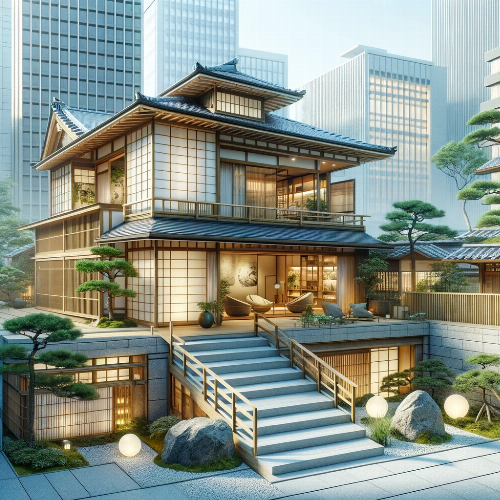Japanese architecture has been heavily influenced by traditional Japanese arts such as calligraphy, painting, and sculpture. The aesthetics and design principles of these arts are reflected in various architectural elements of Japanese buildings including roof styles, use of natural materials, and balanced proportions.
The concept of wabi-sabi, which embraces imperfection and asymmetry, is also an important aspect of Japanese architecture. This is seen in the use of natural materials such as wood and stone, which are left unpolished and irregular to highlight their inherent beauty.
The idea of ma, or the space between objects, is another important component of Japanese architecture. The use of shoji screens and fusuma doors creates a sense of separation and fluidity between rooms, allowing for flexibility in how the space is used and experienced.
In addition, the attention to detail and craftsmanship in traditional Japanese arts has influenced the meticulous construction techniques used in Japanese architecture. This focus on quality and precision can be seen in the intricate joinery of wooden structures, such as the famous Ise Shrine, which is rebuilt every 20 years using traditional techniques.
Overall, traditional Japanese arts have greatly influenced the design, materials, and construction techniques of Japanese architecture, creating a unique and iconic style that is appreciated worldwide.
Publication date:

